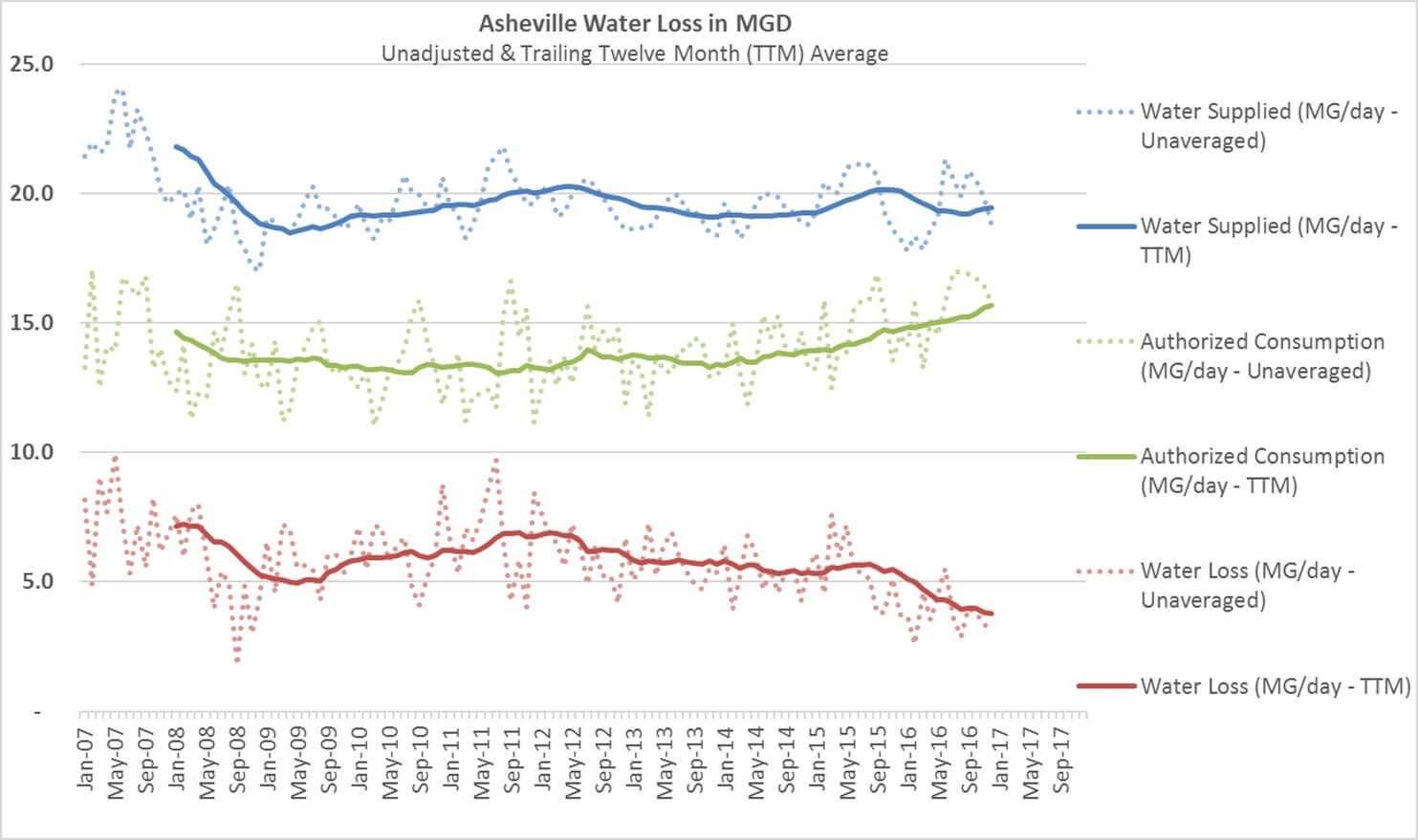Cutting Water Loss and Protecting Rivers is Smart Business for Asheville
When we were developing the “Protecting and Restoring Flows in Our Southeastern Rivers: A Synthesis of State Policies for Water Security and Sustainability” report, we went looking for examples of southeast cities that are doing a great job reducing their demand for water.
We developed the report to support efforts to protect and restore flows in rivers by offering information, alternatives, and models of state policies that result in water security and sustainability. Reducing water use is one key component of keeping water in our rivers. While reduced demand does not automatically equate to more water in our rivers, water conservation and efficiency can often be the cheapest, most reliable, and environmentally beneficial new source of water supply and therefore the first option that communities should evaluate and pursue to meet their water demands rather than seeking new withdrawals. When looking at different water conservation and efficiency strategies, reducing water loss in a community’s water distribution system is often a top priority.
Due to leaking pipes, aging infrastructure, water theft, and inaccurate metering, a substantial amount of water can be “lost” between the treatment plant and the customer. Not only does the utility lose money from unbilled, highly treated water (referred to as “non-revenue water” or “NRW”), water loss also unnecessarily increases the amount of water that must be withdrawn from rivers or aquifers.
Nationally, estimates are that 14–18% of all treated water is lost, or approximately six billion gallons a day. Not only do water utilities lose money on the lost water, but leaking and poorly maintained infrastructure can lead to lower bond ratings, usually resulting in higher costs for the utility and ratepayers.
Our search for cities doing a great job reducing their water losses led us to Asheville, North Carolina. Brandon Buckner, the City of Asheville Water Resources Department’s Meter Services Manager, and Will Jernigan, VP and Director of Water Efficiency with Cavanaugh, a consulting firm that works with cities to optimize their water efficiency, talked with us and shared information about their water loss reduction successes and how they achieved them.
In 2012, Asheville formally launched its water loss reduction program, or as they call it, the Non-Revenue Water (NRW) program, with fantastic results. Through the program, the city reduced its water losses by 2.5 million gallons per day. What’s even better, the city’s demand for water grew over the same time-period but, due to cutting their water losses, they were able to accommodate the increased demand for water without increasing their withdrawals from their local water sources.
Here’s how they did it: They invested in large scale capital projects to replace millions of dollars of water distribution pipes. They replaced all of their roughly 55,000 customer meters with automated meters. They implemented annual American Water Works Association (AWWA) water audits to determine where they were losing water and to track progress. They established a framework of teams, each focused on a different aspect of NRW. Each team has a work plan that prioritizes the highest-ranking NRW areas from their AWWA audit and directs their resources to the highest priorities. The teams regularly communicate with each other to share their progress, establish accountability, evaluate effectiveness and coordinate on next steps. They also brought in Will Jernigan and Cavanaugh to support getting the program up and running and to help with moving the NRW program into advanced practices.

You can learn more about Asheville’s NRW program by checking out this informative article with details about their program.
Interestingly, the City of Asheville took these steps without anyone requiring it and with no real constraints on the amount of water available to them. They undertook these efforts because it reduces costs, improves revenues, mitigates future water-supply risks, strengthens their management of the water system, and serves the long-term interests of their ratepayers.
From a statewide policy perspective, the State of Georgia has a strong statewide water loss policy, and implementation has been improved by technical support and training for local utilities. Georgia’s law requires all water utilities in the state that serve 3,300 or more people to conduct an annual AWWA water loss audit and submit the results to the state. By July 1, 2016, the water systems were required to “develop and conduct a water loss control program to investigate, assess, and implement efforts to improve water supply efficiency,” and water loss programs must be updated, as needed.
Check out our Protecting and Restoring Flows in Our Southeastern Rivers: A Synthesis of State Policies for Water Security and Sustainability report to learn more about what state’s and local governments can do to reduce demand and advance water conservation and efficiency, including managing water loss and integrating conservation and efficiency into withdrawal requirements.




